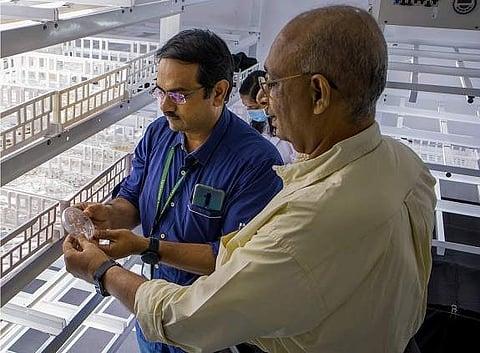

Set up in 2017, AgriGenome Lab embodies a particular brand of scientific temperament, one that searches for answers through relentless work and research. It functions as a genomics (associated with DNA, its evolution and related research) service provider by offering state-of-the-art genome sequencing and analysis of bioinformatics for research and agricultural purposes. And this includes everything from plants and fungi to viruses. Recently, their research on CRISPR-Cas9-based genome editing helped develop a yellow variety of tomato. The COO of the organisation, Dr George Thomas speaks to us about their model of research and why it aims to alter India's approach to plant and animal genomics research. Excerpts:
1. What was the original idea that led to the foundation of AgriGenome and this line of research?
AgriGenome Lab was set up to do research in genomics and to offer services to certain industries and communities. We concentrate on two areas: medical genomics and agricultural genomics. We are actively supporting the research community through genomic sequencing. We've already edited the genomes of several plants and have published various research papers on the different types of rice, medicinal plants and livestock, through our own research programme and in collaboration with other groups. Currently, we are working on different types of spices like cardamom. As far as the genome is considered, most of our work is done now. We work closely with the agricultural community and try to offer them support through studies that promote crop improvement.
2. Could you describe a few of these studies and what they aimed to understand?
Our work has been focused on public requirement. For example, we conducted in-depth research about the genomics of colour. We wanted to understand what causes this colour and the difference between coloured and non-coloured rice. We thought that we would be able to change the conventional wisdom that white rice is better than brown or other colours of rice. It is generally believed that the colour or lack of it is caused by the deletion of a compound called anthocyanin. It is generally considered that it causes the rice to be white. Our research showed that even the other varieties contained anthocyanin and so it doesn't actually add or remove anything. Originally, all rice was coloured but because some people don't like their rice coloured and preferred the white variety, they wanted to get rid of the colour. But the colour is very useful. We have shown that even the other variety has anthocyanin in it and is still coloured. With this work, we can understand different pathways through which various types of food evolved. Likewise, through some of our research on curry leaf, we were able to set meaningful molecular markers that helped us understand its genetic sequencing. In this way, we can help breeders in the agricultural industry do their work faster and more efficiently.
3. Can you explain CRISPR-Cas9 technology and how it can be applied to research on plants?
CRISPR-Cas9 is a molecular editing process invented by Jennifer Doudna and Emmanuelle Charpentier, who won a Nobel Prize for it in 2020. Our attempt was to use the same process to develop a yellow variety of tomato. The colour difference is due to pro-lycopene, a type of anti-oxidant. We were able to do this by editing the gene. We are also using this technology to work on other such projects that we can't reveal right now, including with rice.
As far as the yellow tomato is concerned, the idea is not to offer it on the market but to quickly demonstrate that we are capable of doing it in India as well. This area of research has many applications in agriculture. It has now been published after peer review. And so, it has been proved by all means through consistent analysis and actual results. That's the scientific temperament that we believe in and follow.
4. What are the applications of such technology in the Indian agricultural community and beyond?
When you talk about applications for farmers, there has been a lot of demonstration. By editing just these three genes, these plants have been made to generate resistance to a type of disease. We have been able to eliminate the interaction between this disease and the body, thereby eliminating the infection. One important thing that we have to keep in mind is that GMO technology is a very important part of such research but unfortunately, it is misunderstood. In India, there is no permission to commercialise any GMO. The work we have done is considered natural and equivalent to any natural mutation. So, this is acceptable. Technically, we are not removing any genes, only reducing the expression of certain types.
Let's take the tomato for example. The yellow pigment is slightly better than the red pigment. With red tomatoes, lycopene is not very efficiently absorbed into our system. On the other hand, the yellow pigment is much more easily absorbed. These are all little steps that make a major difference in this work. Ultimately, we have no plans to commercialise it. This is a stepping stone, it opens up a portal into more new technology.
